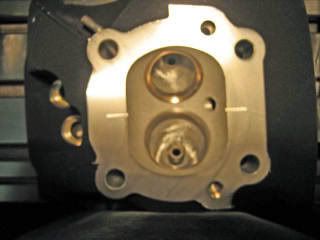That's what I recall with one of your applications Bob. At a fixed boost, when the cylinder pressure placement was put where it should have been, making it efficient, a bunch of energy release ran away and hid. All in all probably not a bad feature of the combustion chamber for a turbo engine, in the sense that it plays it real safe at the expense of a little power/psi boost. A lesser tuner without the pressure equipment and a dyno may have ended up at the more advanced timing making high peak pressure with little or no more power than at a lower pressure setting.bobqzzi wrote:I believe we saw exactly this on the engine I ran with TFX equipment. More timing increased pressure and placed it better, but there was only a tiny bit more power and much more heat released. From a tuning perpective it told us the small increase in power was not worth the extra strain on the components.nitro2 wrote:
True but there can be more to it as well. Some fast burn engines don't have negative work (via combustion) for a wide range of ignition timing settings. Optimum timing is dictated by the burn itself (total energy release and application efficiency). Sometimes changing the timing to apply the energy more efficiently causes a reduction in total energy release, and a net gain of zero. Why? The mixture dynamics change relative to crank angle, quench changes relative to crank angle and heat loss to the combustion chamber changes depending on how things burn. Basically the burn only proceeds properly over a certain range of timing settings and this may not be the range that is needed to generate the highest application efficiency. In this situation combustion chamber modifications are required to get to a win-win situation i.e. more efficient application of the energy without losing the total energy being released.
Clint Gray
TFX Engine Technology Inc.
(Combustion Pressure Analysis Equipment)
www.tfxengine.com
On a turbo engine changing the combustion chamber to get more power/psi is usually not practical as one can just increase the psi.
In cases where boost is not limited, making a big fat pressure curve with as little pressure as needed (i.e below the max the engine can take but for as many degrees as possible) is the way to go, so long as the burn is completed quickly.


